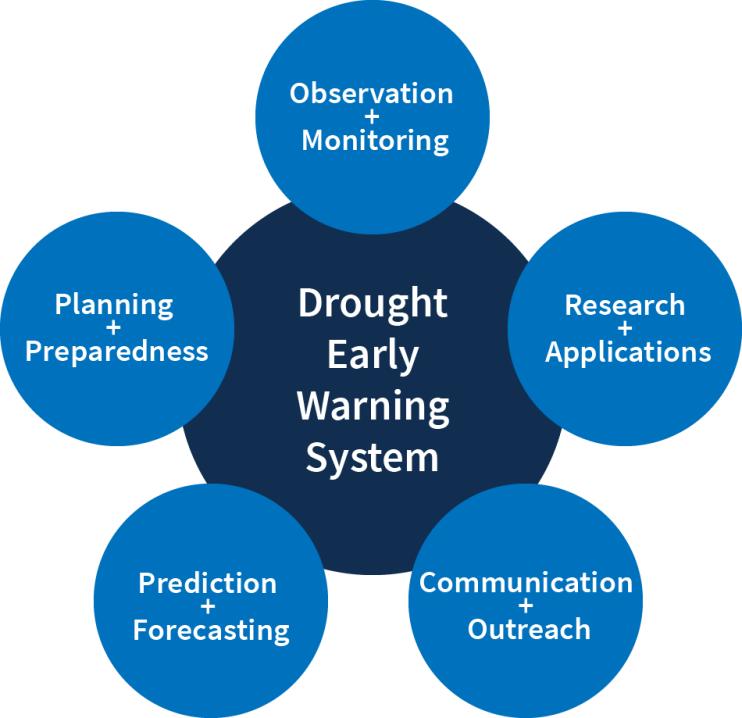Drought Early Warning Activities
Each regional drought early warning system (DEWS) focuses on improving early warning capacity for and resilience to drought in that region, including examining the role of extreme weather events and climate variability in drought.
NIDIS has developed regional drought early warning systems (DEWS) throughout the United States, where local networks of researchers, resource managers, policymakers, the private sector, academics, and other stakeholders share information and actions to help their communities cope with drought.
A DEWS coordinates this network of key regional partners so that decision makers and citizens can systematically approach drought monitoring and forecasting integration when planning and preparing for drought. Regional DEWS encourage innovation by integrating new, locally relevant drought information, and supporting the introduction and testing of technologies that detect and communicate drought risks and warnings.
Regional DEWS activities focus on five key areas for drought early warning (DEWS components): observation and monitoring, prediction and forecasting, planning and preparedness, communication and outreach, and interdisciplinary research and applications.

Drought Early Warning Activities
The table below shows ongoing activities related to drought early warning across the United States. Each activity falls into one or more of the five key areas of drought early warning systems (DEWS components): observation and monitoring, planning and preparedness, prediction and forecasting, communication and outreach, and interdisciplinary research and applications.
This is an assessment of current drought impact reporting practices across the Southeast region, focusing on agricultural impacts, with the goal of improving access, collection, synthesis, and…
2021
2022
This project examined the institutional environment (e.g., water rights, organizational arrangements, different perspectives on water resources management) that shapes drought planning in the…
This project will develop a web-based tool to expand on the initial work done by Danielle Moruzzi: a CIRC graduate student who took a different approach to drought recovery by…
2020
2022
This project plans to expand current work exploring dry farming techniques as a climate adaptation strategy to deal with more drought conditions in western Oregon and Washington when less water is…
2019
2021
A key need at the headwaters of the Upper Missouri River Basin is the improved technical capacity of state-designated drought task forces, such as the Montana Drought and Surface Water Supply…

